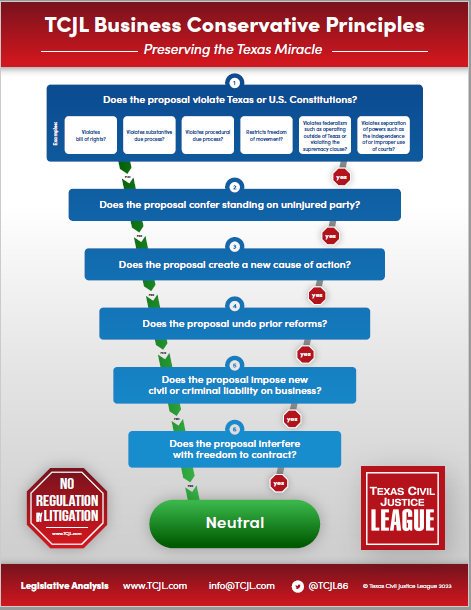 In a case pitting private landowners against a large chicken farming operation in Henderson County, the Texas Supreme Court has reversed a trial court order granting the landowners a permanent injunction that effectively shut down the farm.
In a case pitting private landowners against a large chicken farming operation in Henderson County, the Texas Supreme Court has reversed a trial court order granting the landowners a permanent injunction that effectively shut down the farm.
Steve Huynh, et al. v. Frank Blanchard, et al. (No. 21-0676; June 7, 2024) arose from a dispute between Huynh, a poultry farmer participating in Sanderson’s “Broiler Growing Program,” and a group of private landowners living downwind from the facility. Huynh invested almost $4 million to construct two growing facilities, 300 feet apart on his 230 acre property, leasing half to his son and half to his cousin, neither of whom had any experience raising chickens. By October 2016, two months after delivering the first flock, complaints arose; nearby residences alleged that “putrid odor[s], loud noise[s], and flies emanat[ing] from the [Growers’] property […] substantially interfere[d] with the use and enjoyment of their properties.” The complaints went unresolved by Growers, who continued expanding capacity to 444,800 chickens, twice the number “likely to cause a persistent nuisance odor” according to the Texas Commission on Environmental Quality (TCEQ).
The complainants further alleged that the nuisance’s severity stemmed from the Growers’ unlawful evasion of regulatory requirements. Notably, on the “Poultry Site Assessment Initial Questionnaire,” Huynh falsely denied the presence of neighbors within one-quarter mile of the facility, between one-quarter and one-half mile downwind of the facility, and association between the two LLCs seeking the permit. Per TCEQ rules, violating any factor is “likely to create a persistent nuisance odor and will require the proposed facility to submit an odor control plan.” Making matters worse, Sanderson’s low waste-removal standards and non-existent compensation for clearing manure or dead birds greatly exacerbated the odors produced. During the following year, the landowners lodged hundreds of odor complaints to Sanderson and 37 additional TCEQ complaints, while the TCEQ issued three notices of violation (NOVs), all of which went completely unresolved. Fed up with the Growers’ behavior, the landowners sued Huynh, his compatriots, and Sanderson for nuisance.
The case was tried before jury in October 2019, finding that Defendants “‘intentionally’ and ‘proximately cause[d] a private nuisance’”: a “condition that substantially interferes with the use and enjoyment of Plaintiffs’ property by causing unreasonable discomfort or annoyance to persons of ordinary sensibilities attempting to use and enjoy it.” Based on these findings and viewing a narrower injunction as “neither economic nor feasible,” “nor […] equitable,” the court granted a permanent injunction without monetary awards. Defendants appealed. The Tyler Court of Appeals affirmed..
In an opinion by Justice Busby, joined by Justices Lehrmann, Devine, Blacklock, Young, and Boyd, the Court sent the case back to the trial court for reconsideration of the injunction’s broad scope. SCOTX reversed the sections of the trial court order that permanently enjoined Defendants from conducting any listed chicken-growing “Activities” on any property owned by Huynh and his pals within five miles of Plaintiffs’ properties. Justice Huddle, joined by Chief Justice Hecht, Justice Bland, and in part by Justice Young, agreed with the Court’s judgment but diverged on the role of jurors and their findings in the case, as well as how the trial court handled evidence of the TCEQ’s existing regulatory protocols to deal with the nuisance.
Defendants challenged the permanent injunction by claiming the jury’s finding that the recurrence of harm (bad odors) is “occasional, irregular, intermittent, and not reasonably predictable” indicates a “temporary nuisance” and thus prevents the court from finding “imminent harm”, a prerequisite for permanent injunctive relief. According to Justice Busby, however, the Defendants confused factual determinations with legal ones. He reiterated that: (1) “whether an injury is temporary or permanent is a question of law for the court to decide,” and (2) “since imminent harm is a legal question it is not subject to a jury’s ultimate determination.” Justice Huddle disagreed with the majority’s characterization of the standard, arguing that it “improperly usurps the jury’s fact-finding role.” She would have held that the jury’s finding “can only support a temporary nuisance.” Either way, however, a united court concluded that the court’s ability to enjoin a nuisance “does not turn on the nuisance’s characterization as temporary or permanent.” Consequently, “the trial court did not abuse discretion by concluding that the nuisance, though not found by the jury to be permanent, created imminent harm warranting a permanent injunction.”
Permanent injunctions are also justified by “the absence of an adequate remedy at law”. The Defendants disputed the injunction because Plaintiffs had an adequate remedy at law for “damages and future suits.” The trial court rejected this position because it found that the injuries (and damages) were indeterminate. Moreover, the nuisance’s unending, unpredictable nature boded ill for perpetual litigation, a “multiplicity of suits,” by definition “prevent[ing] [the remedy] from being complete and adequate” [citing Campbell v. Wilder, 487 S.W.3d 146, 152 (Tex. 2016) (quoting Repka v. Am. Nat. Ins. Co., 186 S.W.2d 977, 980 (Tex. 1945).] After a great deal of equity balancing (the majority opinion runs to 92 pages), Justice Busby noted that while the trial court was just in granting an injunction that fully abates Plaintiffs’ injury, it “abused its discretion by granting a permanent shut-down injunction as its very first remedy” (since abatement need not mean a shutdown). Justice Huddle called it “cracking a nut with a sledgehammer” (even though if we lived downstream from a massive chicken farm, it would be a pretty big nut).
Perhaps the greatest distinction between the opinions is their assessment of injunctive scope. Both believe the scope was overly broad because the court failed to consider TCEQ’s requirements, duly stressing how “injunctions must not operate as punishments but as correctives.” Justice Huddle viewed the trial court’s neglect of TCEQ input as the case’s principle error, making it the primary focus of her opinion. Justice Busby’s examination (which Justice Huddle characterizes as “winding” and unspecific) posits three main errors. First, the trial court expressly relied on improper considerations in reaching its conclusions regarding scope. Second, the injunction’s breadth was unsubstantiated because the trial court (a) failed to consider TCEQ recommendations when crafting the injunction, (b) incorrectly prohibited conduct that has not been shown to produce similar nuisance injuries, and (c) acted arbitrarily in selecting five miles from Defendants’ properties as the relevant distance for the injunction’s geographic scope. Third, “the trial court failed to address the relative hardships and other equities as to each Defendant, which it should consider in crafting a narrower injunction on remand.”
This is an important decision for a number of reasons, but it should be required reading for owners and operators of industrial operations in rural areas who may face similar nuisance claims. While it does not appear from the facts that Defendants were the best managers and operators of a facility boasting a half-million chickens or that they were entirely truthful on their permit application to TCEQ, the trial court, in our judgment, could easily have tied lifting the injunction to demonstrated compliance with TCEQ regulations within a specified time period. In any event, this case illuminates a conflict between private landowners who are doing vastly different things with their property. And as Justice Busby points out, finding an equitable solution that harmonizes those uses to the maximum extent possible isn’t an easy task.
This article was researched and substantially composed by TCJL Research Intern Shaan Singh.












